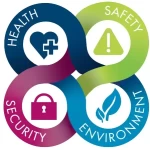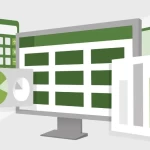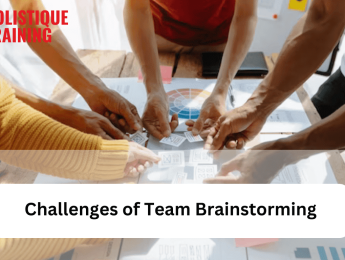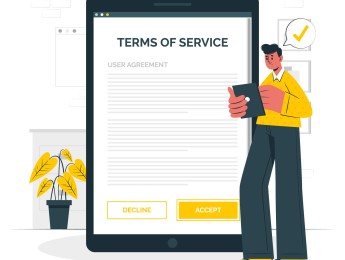- Table of Contents
- What Is a Report?
- Why Is Writing a Report Important?
- Communication
- Documentation
- Decision-Making
- Accountability
- Knowledge Sharing and Collaboration
- Legal and Compliance Requirements
- Continuous Improvement
- When Should I Write a Report?
- Academic Assignments
- Business and Professional Settings
- Scientific Research
- Investigations and Incident Reporting
- Government and Policy Analysis
- Healthcare and Medical Fields
- Environmental and Sustainability Reports
- What Is the Structure of a Report?
- Title Page
- Abstract or Executive Summary
- Table of Contents
- Introduction
- Methodology
- Findings or Results
- Discussion or Analysis
- Conclusion
- References
- Appendices
- How to Write a Report in 7 Steps
- Step #1: Understand the Purpose and Scope
- Step #2: Conduct Thorough Research
- Step #3: Plan and Outline
- Step #4: Write the Introduction
- Step #5: Present Your Findings
- Step #6: Analyse and Interpret
- Step #7: Summarise and Conclude
- The Evolution of Reporting Software
- Manual Reporting Era
- Introduction of Spreadsheet Software
- Integration of Database Technologies
- Business Intelligence (BI) Platforms
- Cloud-Based Reporting
- Mobile Reporting Apps
- Integration of Artificial Intelligence (AI)
- Automation and Natural Language Processing (NLP)
- Embedded Analytics
- Blockchain in Reporting
- Conclusion
Introduction
Writing a report is an essential skill in various academic and professional settings. Whether you are a student, a researcher, or a working professional, effectively conveying information through a report is crucial. Reports provide a structured and concise way to present findings, analyse data, or document important information.
In this comprehensive guide, we will explore what a report is, why report writing is important, when to write one, and the fundamental structure of a report. Finally, we will delve into seven essential steps to help you write a report with confidence and clarity.
What Is a Report?
Before we discuss the intricacies of report writing, it's essential to understand what a report is. A report presents factual information, data, or findings on a specific subject or topic. Reports are typically structured and objective, providing a clear overview of a particular situation, analysis, or investigation. They are often used to inform decision-making processes or to disseminate research outcomes.
Why Is Writing a Report Important?
Writing a report is not merely a routine task but a skill that holds immense significance across various academic, professional, and organisational contexts. The importance of report writing can be understood through reports' multifaceted roles in facilitating effective communication, documentation, decision-making, accountability, knowledge sharing, legal compliance, and continuous improvement. Let’s discuss these in detail:
Communication
Reports are powerful communication tools, offering a structured and organised format for conveying complex information to a specific audience. By presenting data, analysis, and findings concisely and clearly, reports ensure that the intended message is communicated and comprehended. This aspect is particularly crucial when conveying intricate information is vital, and a systematic presentation can make all the difference in the audience's understanding.
Documentation
One of the primary functions of reports is to serve as official records that document important information, research findings, investigations, or project updates. They provide a detailed account of activities, processes, and outcomes, creating a knowledge repository. Well-written reports become historical records, allowing individuals and organisations to track progress, learn from past experiences, and refer back to critical information when needed. This documentation aspect contributes significantly to organisational memory and learning.
Decision-Making
Reports play a pivotal role in informed decision-making by presenting facts, data, and analysis that inform and guide decision-makers. Decision-makers, whether in business, academia, or government, rely on comprehensive and well-researched information to evaluate options, weigh risks, and make informed choices. Whether it's a strategic business decision, a policy choice, or an investment opportunity, reports enable evidence-based decision-making, providing a solid foundation for choosing the best course of action.
Accountability
Reports contribute to accountability by holding individuals, organisations, or projects accountable for their actions and outcomes. They provide a transparent record of progress, achievements, or shortcomings, allowing stakeholders to assess performance and take necessary measures. This accountability is crucial in maintaining transparency, building trust, and ensuring that entities are held responsible for their responsibilities and commitments.
Knowledge Sharing and Collaboration
Reports foster knowledge-sharing and collaboration among teams and colleagues. By documenting research, analysis, or project updates, reports enable others to benefit from the insights and information gathered. They serve as a platform for exchanging ideas, initiating discussions, and building on existing knowledge. In a collaborative environment, reports become valuable tools for sharing expertise, aligning team members, and collectively working towards common goals.
Legal and Compliance Requirements
Reports are essential in specific fields or industries to comply with legal or regulatory obligations. For example, incident reports document accidents, workplace hazards, or legal matters, ensuring compliance with health and safety standards. Compliance reports demonstrate adherence to regulations, industry standards, or ethical guidelines. Failure to comply with reporting requirements can lead to legal consequences or reputational damage, underscoring the critical role of reports in maintaining legal and ethical standards.
Continuous Improvement
Reports contribute to continuous improvement by identifying areas for enhancement or optimisation. Through data analysis, feedback collection, or performance evaluation, reports highlight strengths, weaknesses, and opportunities for growth. By analysing trends and patterns, reports facilitate evidence-based decision-making and help drive improvement initiatives. This focus on continuous improvement ensures that organisations evolve, learn from their experiences, and strive for excellence.
In summary, the importance of writing a report goes beyond the act of documentation; it is a cornerstone in effective communication, decision-making, accountability, knowledge sharing, legal compliance, and organisational improvement. A well-crafted report informs, influences positive outcomes, and contributes to the overall success of individuals and organisations.
When Should I Write a Report?
Reports find relevance in diverse scenarios, spanning academic assignments, business and professional settings, scientific research, and investigations/incident reporting. The need to write a report arises in specific contexts where a structured presentation of information is essential for comprehension, decision-making, documentation, or compliance.
Academic Assignments
One of the most common situations requiring report writing is within the realm of academia. Students often find themselves tasked with writing reports as part of their coursework. This can involve summarising research, documenting experiments, or presenting findings from a study. In an academic setting, reports serve as a means for students to demonstrate their understanding of a subject, showcase research skills, and systematically communicate complex information.
Business and Professional Settings
Reports are frequently employed in the business and professional world. In these settings, reports serve various purposes, such as presenting market research, providing project updates, or conducting performance analysis. Business reports are instrumental in communicating critical information to stakeholders, including executives, clients, or team members. Whether it's a quarterly financial report, a marketing analysis, or a project status update, creating a well-structured report is indispensable in professional environments.
Scientific Research
Reports play a vital role in documenting the findings of experiments, studies, or investigations in scientific research. Researchers write reports to communicate their methodologies, present data, and discuss the implications of their research. Scientific reports follow a rigorous structure to ensure the research's transparency, replicability, and credibility. They contribute to the broader scientific community by disseminating knowledge and providing a foundation for further studies.
Investigations and Incident Reporting
Reports are crucial in situations involving investigations or incidents. Incidents such as accidents, disputes, or legal matters necessitate the documentation of details, whether in a workplace, a legal context, or within an organisation. Incident reports are created to provide a clear account of what occurred, contributing to understanding, resolution, and, when necessary, legal compliance. These reports are crucial tools for learning from incidents, implementing preventive measures, and ensuring accountability.
Government and Policy Analysis
Reports are instrumental in presenting analyses, proposals, or recommendations in governmental and policy-related contexts. Policymakers often rely on reports to make informed decisions about legislation, regulations, or public programmes. These reports provide a comprehensive overview of the issues at hand, supported by data and analysis, assisting policymakers in understanding the potential impacts of their decisions.
Healthcare and Medical Fields
In healthcare, reports are essential for documenting patient information, medical diagnoses, and treatment plans. Medical reports serve as a means of communication among healthcare professionals, ensuring continuity of care. Additionally, research reports in the medical field contribute to advancements in medical knowledge and practices.
Environmental and Sustainability Reports
Reports are crafted to assess the impact of human activities on the environment in the context of environmental conservation and sustainability. These reports analyse data related to ecological changes, resource consumption, and conservation efforts. Organisations and governments use environmental reports to inform the public, policymakers, and stakeholders about the state of the environment and the effectiveness of sustainability initiatives.
In essence, the decision to write a report is driven by the need to communicate information in a structured and organised manner, ensuring that the intended audience can comprehend and utilise the presented data. Reports are invaluable tools in diverse fields, aiding in knowledge dissemination, decision-making, documentation, and compliance with various professional, academic, and ethical standards.
Type of Report | Characteristics | Purpose |
Analytical Report | In-depth analysis, data-driven insights | Support decision-making and strategic planning |
Research Report | Presents findings from systematic study | Communicate research methods and outcomes |
Business Intelligence | Visualises trends, supports data-driven decisions | Enhance business performance through data insights |
Progress Report | Tracks project milestones and achievements | Inform stakeholders about project status |
Incident Report | Documents details of accidents or legal matters | Facilitate investigation and ensure compliance |
Table 1: Types of reports and their characteristics
What Is the Structure of a Report?
Reports generally follow a structured format to ensure clarity, logical flow, and ease of navigation for readers. While the exact structure may vary depending on the purpose, field, or specific requirements, most reports consist of the following sections:
Title Page
The title page serves as the cover of the report. It includes essential information such as the report title, author's name, date, and any other relevant details, such as the organisation or institution. It provides the first impression of the report and sets the stage for what follows.
Abstract or Executive Summary
The abstract or executive summary provides a concise overview of the entire report. It highlights the key findings, main points, and recommendations, allowing readers to grasp the essence of the report without reading it in its entirety. This section is crucial for busy professionals needing a quick understanding of the report's content.
Table of Contents
The table of contents lists all the main sections and subheadings of the report, along with their corresponding page numbers. This aids readers in navigating the report and locating specific information quickly. It serves as a roadmap for the document, enhancing accessibility and organisation.
Introduction
The introduction sets the stage for the report by introducing the topic, providing background information, stating the report's purpose, and outlining the scope and objectives. It is designed to engage the reader and generate interest in the subject matter, laying the foundation for the information presented in subsequent sections.
Methodology
The methodology section describes the approach or methods used in gathering information, conducting research, or collecting data for the report. It explains the tools, techniques, and procedures employed to ensure the reliability and validity of the findings. This section is critical for establishing the credibility and rigour of the report's content.
Findings or Results
This section presents the main findings, data, or results obtained through research, analysis, or investigation. It is crucial to present the information clearly, organised, and structured, using headings, subheadings, and visuals where appropriate. This section forms the report's core, providing the substantive content that the reader seeks.
Discussion or Analysis
The discussion or analysis section delves deeper into the findings and interprets their implications. It provides an opportunity to analyse the data, draw connections, and relate the findings to the research questions or objectives. This section often incorporates relevant theories, concepts, or existing literature to support the analysis, adding depth and context to the presented information.
Conclusion
The conclusion summarises the report's key points and findings. It restates the purpose, highlights the main outcomes, and draws logical conclusions based on the evidence presented. If applicable, recommendations for future actions or further research may be included. The conclusion synthesises the report's content, leaving a lasting impression on the reader.
References
The references section lists all the sources, references, and citations used in the report. Adhering to a specific citation style (e.g., APA, MLA) and providing accurate and complete information allows readers to locate the sources if needed. This section adds credibility to the report by acknowledging the sources contributing to the presented information.
Appendices
The appendices section includes any supplementary material that supports the report but may not necessarily be included within the main body. This can include additional data, charts, graphs, survey questionnaires, or any other relevant documentation that enhances understanding. Appendices are optional for readers but can provide additional context or details for those seeking a deeper understanding of the topic.
By following this structured approach to report writing, authors can ensure that their reports are well-organised, coherent, and effectively convey the desired information to their audience. Each section serves a specific purpose, contributing to the overall effectiveness and professionalism of the report.
How to Write a Report in 7 Steps
Writing a report may seem like a formidable task, but breaking it down into manageable steps can make the process more approachable and the end result more effective. Here's how you can write a report in seven essential steps:
Step #1: Understand the Purpose and Scope
Before starting the writing process, it's crucial to understand the report's purpose and scope clearly. Ask yourself: What is the main goal of the report? Who is the target audience? What specific information needs to be conveyed? Clarifying these aspects sets the foundation for the writing process, ensuring the report serves its intended purpose.
Step #2: Conduct Thorough Research
A well-researched report is a credible and valuable report. Gather relevant and reliable information through thorough research. Utilise reputable sources, such as scholarly articles, books, or credible websites, to ensure the accuracy and credibility of the data. The depth of your research contributes to the robustness of your report, providing a solid foundation for your findings and analysis.
Step #3: Plan and Outline
Creating a detailed outline is a crucial step in organising your report. This roadmap helps structure your thoughts, ensuring a logical flow throughout your writing. Break down your report into sections and subheadings, allocating specific information to each. This enhances the coherence of your report and serves as a guide during the actual writing process.
Step #4: Write the Introduction
The introduction is the gateway to your report. Craft an engaging introduction that provides context, states the report's purpose, and outlines its scope and objectives. Hook your readers by making them understand the significance of the topic. A well-crafted introduction sets the tone for the entire report, capturing the reader's interest and motivating them to delve further into the content.
Step #5: Present Your Findings
In this section, present your research findings, data, or analysis clearly and in order. Use appropriate headings, bullet points, or visuals to enhance readability and comprehension. Ensure that the information is presented logically, following the structure outlined in your plan. This is the core of your report, where you deliver the substance that addresses the report's purpose and objectives.
Step #6: Analyse and Interpret
Once your findings are presented, delve deeper into their implications. Analyse the data, draw connections, and interpret the results. Relate your findings back to the research questions or objectives set earlier. This section adds depth to your report, demonstrating your ability to critically analyse information and draw meaningful conclusions.
Step #7: Summarise and Conclude
The conclusion is the synthesis of your report. Summarise the key findings and their significance. Restate the purpose and highlight the main outcomes. Draw logical conclusions based on the evidence presented in the findings. If applicable, offer recommendations or suggestions for further research. The conclusion closes your report, leaving a lasting impression on the reader.
You can confidently navigate the report writing process by following these seven steps. Pay attention to detail, maintain a clear and concise writing style, and use appropriate headings and visuals to enhance readability. It’s also recommended to check grammar online to find and fix all sorts of writing errors. With practice and careful planning, you can become proficient in creating reports that inform, persuade, and document information accurately across various contexts.
The Evolution of Reporting Software
The reporting landscape has undergone a transformative journey with the advent and evolution of reporting software. Technological advancements have not only streamlined the process of report creation but have also significantly enhanced the efficiency, accessibility, and visual appeal of reports. Let's explore the key milestones in the evolution of reporting software and understand how these innovations have revolutionised how information is analysed, presented, and consumed.
Manual Reporting Era
In the early days, reports were manually created, often involving a time-consuming and labour-intensive process. Analysts and professionals had to gather data, compile information, and manually create reports using tools like spreadsheets and word processors. This era was characterised by a lack of automation, making it challenging to handle large datasets and generate reports quickly.
Introduction of Spreadsheet Software
The advent of spreadsheet software, such as Microsoft Excel, marked a significant leap in reporting capabilities. Spreadsheets allowed for better organisation and manipulation of data, enabling users to create tables, charts, and graphs. While this improved the efficiency of report creation, it still required manual input and lacked advanced data visualisation features.
Integration of Database Technologies
As organisations began to amass larger volumes of data, integrating database technologies became crucial. Database management systems enable users to store and retrieve data more efficiently. Reporting tools started integrating with databases, allowing for dynamic and real-time reporting, a substantial improvement over static, manually generated reports.
Business Intelligence (BI) Platforms
The emergence of Business Intelligence (BI) platforms revolutionised reporting by providing comprehensive suites of tools designed specifically for data analysis and reporting. BI platforms, including Tableau, Power BI, and QlikView, introduced interactive dashboards, sophisticated data visualisation options, and seamless integration with various data sources. These platforms empowered users to create visually compelling reports with dynamic, real-time data.
Cloud-Based Reporting
Cloud computing further transformed reporting by facilitating access to data and reporting tools anytime, anywhere. Cloud-based reporting solutions, such as Google Data Studio and Domo, allowed users to collaborate in real time, eliminating geographical constraints. The cloud also provided scalable infrastructure, enabling organisations to handle large datasets without significant investment in physical hardware.
Mobile Reporting Apps
The ubiquity of smartphones prompted the development of mobile reporting apps. These apps empower users to access and interact with reports on the go, fostering increased agility and responsiveness. Mobile reporting ensures that decision-makers have crucial information at their fingertips, enhancing the speed and efficiency of decision-making processes.
Integration of Artificial Intelligence (AI)
Integrating Artificial Intelligence (AI) in reporting software has introduced predictive analytics and automated insights generation. AI algorithms analyse data patterns, identify trends, and offer actionable insights, reducing the manual effort required for data interpretation. This saves time and enhances the accuracy and relevance of the information presented in reports.
Automation and Natural Language Processing (NLP)
The latest advancements include increased automation and Natural Language Processing (NLP) capabilities. Automation streamlines the report generation process, allowing users to schedule and automate routine reporting tasks. NLP enables users to interact with reports using natural language, making data analysis and interpretation more accessible to non-technical users.
Embedded Analytics
Embedded analytics seamlessly integrates reporting features into existing business applications. This approach enables users to access reports within the context of their everyday workflows, enhancing the overall user experience and promoting data-driven decision-making without the need to switch between different applications.
Blockchain in Reporting
The integration of blockchain technology is emerging as a trend in reporting, particularly for ensuring data integrity and transparency. Blockchain's decentralised and tamper-resistant nature provides an added layer of security and trust in the accuracy of reported information.
In summary, the evolution of reporting software has been marked by a transition from manual, static reports to dynamic, interactive, and intelligent reporting solutions. The current landscape emphasises user-friendly interfaces, real-time collaboration, advanced analytics, and the integration of cutting-edge technologies. As reporting software continues to evolve, organisations can expect further enhancements in usability, automation, and the ability to derive meaningful insights from complex datasets.
Conclusion
Writing a report may initially seem daunting, but by following these seven steps and understanding the fundamental structure, you can confidently create reports that effectively communicate your message. Remember to pay attention to detail, maintain a clear and concise writing style, and use appropriate headings and visuals to enhance readability. With practice and careful planning, you can become proficient in writing reports that inform, persuade, and document information accurately across various contexts.
Finally, if you want to improve your report writing skills, we encourage you to check out our course, ‘Advanced Business Writing Skills’. Enrol today and start exercising your linguistic muscle!
























